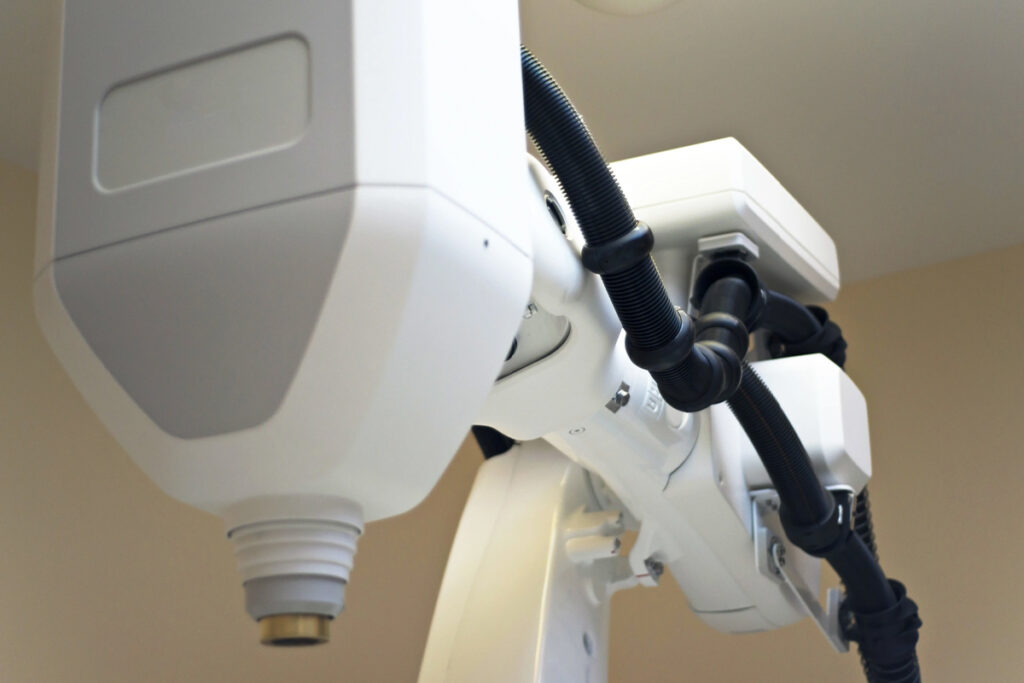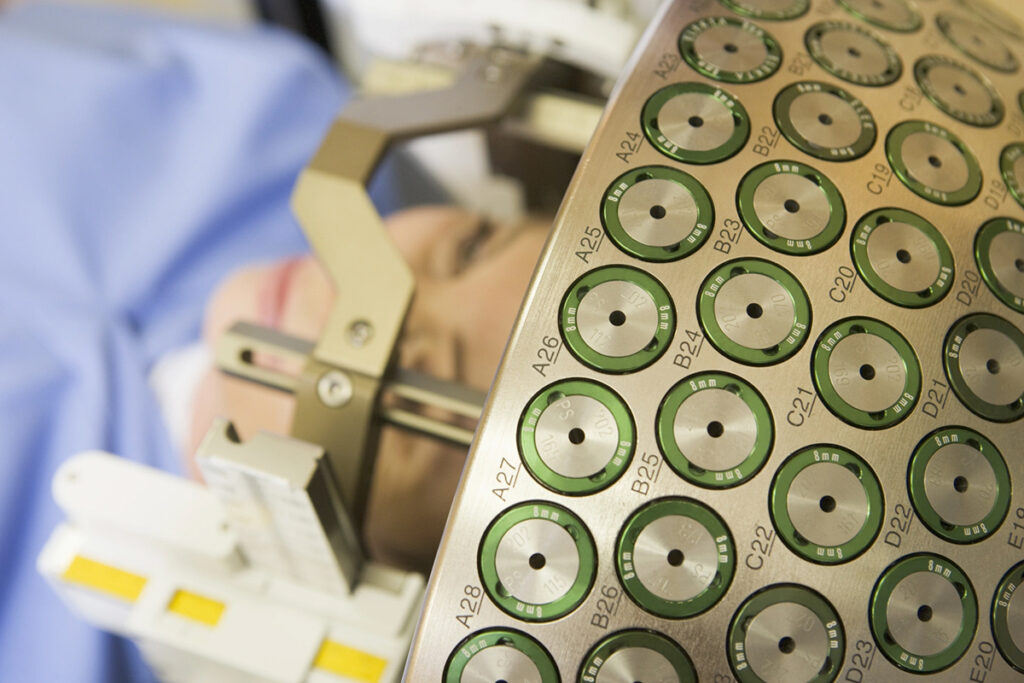Stereotactic radiosurgery is a technology developed over the last fifty years where precisely focused radiation beams are used to destroy cells deep within the body, without requiring any actual brain exposure. It has been developed as an alternative to ‘external beam’ radiation therapy, or conventional radiation therapy, in which the body and the target tissue both receive equal doses of radiation. Because the beams are so compactly focused in radiosurgery, they do not contribute a clinically significant dose of radiation to any structures outside the target field. This allows very high doses to be delivered to the target tissue with a minimal risk of injury to the surrounding brain or spine.
One cannot underestimate the importance of realizing that even though you cannot, see, smell, taste, or feel radiation, its effects are powerful. Whether radiosurgery is being used for metastatic disease, benign tumors, an arteriorvenousmalformation, or another indication, there is always the risk of radiation complications. In general, these can be divided into immediate, delayed, and late complications.
Immediate complications include swelling of the brain at the border of the radiation target site. This may cause headache, nauseas, or if severe an altered level of consciousness.
Delayed side effects are reactions to the radiation that occur in weeks to months after treatment. These include hair loss (as opposed to conventional radiation, it is very rare to see hair loss after radiosurgery), as well as more serious side effects such as cranial nerve problems and necrosis (or cell killing) of normal brain tissue. Some delayed ‘adverse radiation effects’ may be permanent and even disabling, but in general they can usually be successfully managed with oral steroids.
Late complications of radiation treatment are principally thought to be radiation induced tumor formation. Importantly, this is a life-long risk, meaning that the younger a patient is irradiated, the higher the chance of them developing a radiation induced tumor. I generally am biased against radiation for younger patients, as well as for patients with tumor syndromes in which there the body’s mechanisms of tumor suppression are already compromised (e.g. neurofibromatosis).
Finally, there is reason to be cautious about the use of radiosurgery in patient prone to developing tumors, specifically patients with neurofibromatosis type 2. Firstly, there is evidence that radiation is less effective in NF2 than in the ‘general population’. Secondly, the risks of radiation in NF2 are much higher, particularly the risk of causing a cancer, possibly as high as 4-5%. Hence in ‘otherwise healthy’ patients with NF2, and/or in the young in general, radiation should be used with caution.

